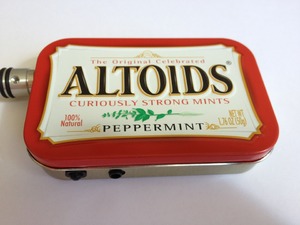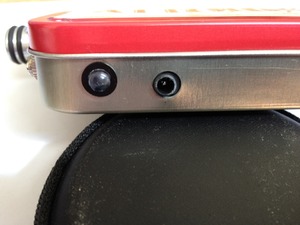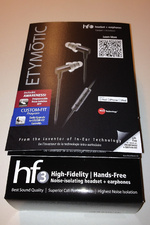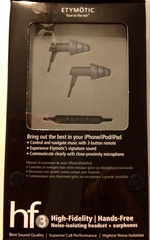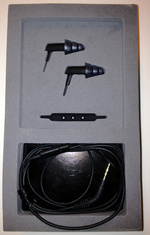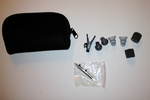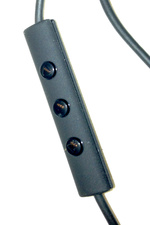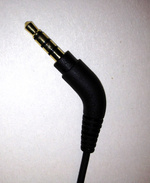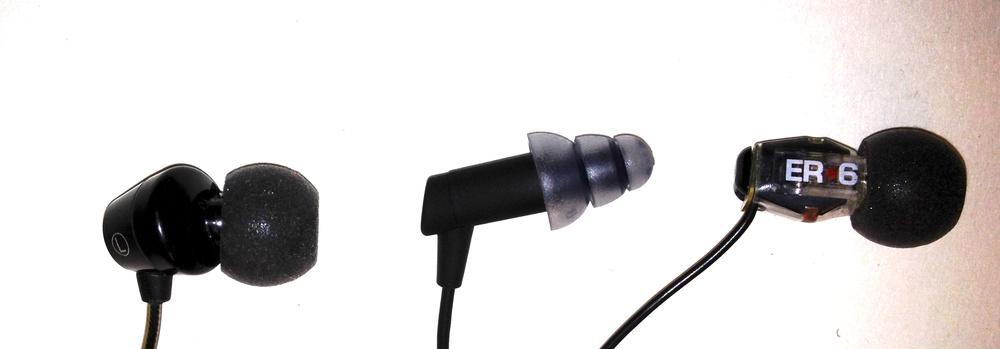If you are wondering why you may need a headphone amplifier (amp) then take a look at my previous blog entry here.
After buying a decent pair of headphones, a headphone amp is the next best investment if you want to get the best possible sound quality out of your media player (e.g. iphone, Android, ipad, Cowon media player or other).
Chu Moy headphone amp
The Chu Moy (CMoy) headphone amp is an extremely popular do-it-yourself headphone amplifier project that can be fun and easily customized to your equipments specifications. Like most other open source do-it-yourself projects, creative entrepreneurs have taken the basic cmoy concept and have made significant improvements. This is where the JDS Labs cMoyBB headphone amplifier comes in.
Design and build
The product I am reviewing here is the JDS Labs cMoyBB v2.03 headphone amplifier. As Chu Moy type amps go, this is considered to be the best designed product currently available.
As you can see, the amp is built into an Altoids mint tin which makes the entire product surprisingly sturdy. The kit I received was flawless (do dings or scratches) and even after normal wear will definitely hold up well. If seems to attract attention wherever I used it and people always asked me what it was, what it did and where they could get one.
As a frequent business traveler, I was concerned about how this would be perceived at the security checkpoint but I haven’t had too many issues. There was only one situation where the agent asked me to power the device, and prove that it was actually an audio device.
The device is powered by (an included) 9 volt battery which makes it portable and easy to replace. However you can also power it via a wall plug which can be purchased from any local electronics retailers. JDS Labs provide the plug specifications here.
The external power plug connects here (next to the blue power LED).
The device is smart enough to auto-shutdown when you unplug your headphones which is a nice battery saving feature. I tested the unit with a full new Duracell battery and the device powered by Ultimate Ears Triple-Fi 10 for about 12 hours straight.
There is a little switch on the board that turns on (or off) the build in bass boost feature to ensure you get the sound signature you want. The first thing I notices is the custom board they used. Many CMoy amp resellers build their products using generic proto-boards (breadboards) whereas the JDS Labs one uses a custom designed and manufactured board. Just goes to show how much care went into the design and production of the product.
A common complaint from many headphone amp buyers is that the units aren’t tuned for their headphones thus cause distortion or end up being underpowered for the really high end headphones. No issues here with the cMoyBB from JDS Labs. When you place your order, make sure to specific the brand and model of your headphones so the team can custom tune the amp for you. This means you get the best possible performance from the amp for your specific setup.
Bring on the sound
Like everything else in the wonderful world of audio, garbage in equals garbage out. To get the best possible result from the cMoyBB, you have to use it with quality headphones and quality recordings.
In order to test the sound reproduction quality, I use the following setup:
- an iPhone 4S (with and without the FIIO L3 Line Out Dock)
- Cowon i7 audio player
- stock Apple original headphone (not the new EarPod)
- various headphones including the Etymotic ER-6, Etymotic HF3, Ultimate Ears Triple-Fi 10, Sennheiser PXC-250, Sennheiser HD515, Audio Tecnica ATH-ANC7b and the Audio Tecnica ATH-A700x.
- MP3 files encoded directly from the original CDs in various bit rates from 128 to 320 kbit/s
- audio files stored in the Apple lossless codec format
The songs I used were:
- Bizet – Carmen Suite No. 1 - chosen because of the various instruments included such as flute, harp and worn.
- Wolfgang Amadeus Mozart – Clarinet Concerto in A - a song that represent a full symphony range.
- Pink Floyd – Mother - this song includes both guitar and drums. A great way to find out how clean sound reproduction actually is.
- AC/DC – Back In Black - this is an excellent representation of rock music, and a fantastic way to test the lows in the mids.
- The ultimate demonstration disc (difficult to find but worth it).
- Some spoken word from Audible using the highest quality format available.
Regardless of the headphone and song combination, the device performed very well. The best results came when I used my higher end headphones with the Apple lossless (or 320bit encoded) songs and the FIIO L3 LOD cable. The amp had no issues. Even when I was listening to extremely wide sound stage songs with small nuances with a fast tempo, the device kept up wonderfully. To be honest, it shamed some other (more expensive) headphone amps I have previously tested. The important point was that it kept all of the audio details, provided the beautiful wide sound stage my headphones support and didn’t introduce any distortion or other audio artifacts.
The sound signature of the amp was a bit warm but just slightly. All the frequency ranges were clear and without distortion. I kept the bass boost off because I prefer a more balanced sound. I found that the bass boost modified the soundstage too much for some songs making these sound less natural but for others (songs made for bass) it provided a nice clear boost to the low end. This is where the quality and sound signature of your headphones is important. It will accentuate the characteristics of your headphone so you may want to experiment with bass boost and see how it performed with your cans.
There are other headphone amps that provide better performance but not at this price point. Few people want to invest $300-500 just for a headphone amplifier. Again the JDS Labs cMoyBB blew away the competition in the $50-$150 range.
If you are slightly more geeky and want to further improve on a great design, you can replace the stock OPA2227 opamp with a faster one but for most users, this would be overkill.
Verdict
After having spent a couple of weeks with the device, my preferred setup became my Ultimate Ears Triple-fi 10, the FIIO L3 LOD, 320bit encoded MP3s and my iPhone 4s. I love this thing and recommend it highly. It is well built, can be customized by the factory for your headphones and a very good value (quality/price).
